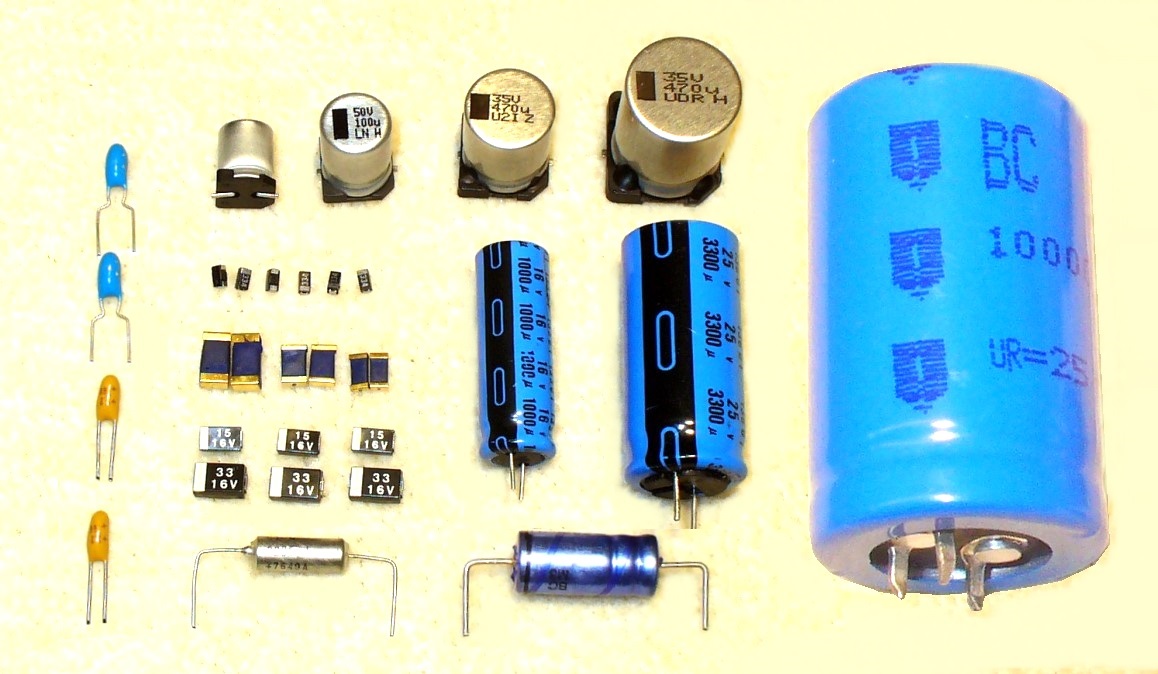What are three 3 uses of a capacitor?
What are three 3 uses of a capacitor?
Capacitors are fundamental electronic components that play a crucial role in various applications. They are widely used in electrical and electronic systems for a range of purposes. In this article, we will explore three primary uses of capacitors and their significance in different fields.

What is a Capacitor?
Before diving into the uses of capacitors, let's first understand what a capacitor is. A capacitor is an electronic component that stores and releases electrical energy. It consists of two conductive plates separated by an insulating material known as a dielectric. When a voltage is applied across the plates, the capacitor stores charge, which can be later discharged.
Use 1: Energy Storage
One of the primary uses of capacitors is energy storage. Capacitors have the ability to store electrical energy and release it when needed. They are commonly used in electronic devices such as cameras, flashlights, and mobile phones to provide short bursts of power. Capacitors can quickly charge and discharge, making them suitable for applications that require rapid energy delivery.
Use 2: Filtering and Coupling
Capacitors are extensively used for filtering and coupling purposes in electronic circuits. They act as filters by blocking direct current (DC) while allowing alternating current (AC) to pass through. This property is utilized in power supply circuits to remove unwanted noise and ripple voltage. Capacitors also play a vital role in coupling signals between different stages of amplifiers, ensuring efficient signal transfer.
Use 3: Timing and Oscillation
Another significant use of capacitors is in timing and oscillation circuits. Capacitors, in combination with resistors and other components, determine the timing characteristics of various electronic systems. They are commonly used in timing circuits, oscillators, and clock generators. Capacitors enable precise control of timing intervals and frequency generation, making them essential in applications such as timing delays, pulse generation, and frequency modulation.
Capacitors in Electronics
Capacitors are integral to the functionality of electronic devices and systems. They are employed in televisions, computers, audio equipment, and countless other electronic devices. Capacitors are crucial for power factor correction, voltage regulation, noise suppression, and stability improvement in electronic circuits. Their ability to store and release energy in a controlled manner makes them indispensable in modern electronics.
Types of Capacitors
There are various types of capacitors available, each with its own unique characteristics and suitable applications. Some common types include:
Electrolytic capacitors: These capacitors have high capacitance and are commonly used in power supply circuits.
Ceramic capacitors: They are compact and widely used for decoupling and bypassing applications.
Film capacitors: These capacitors offer high stability and are suitable for AC applications.
Tantalum capacitors: They are known for their high reliability and are commonly used in compact electronic devices.
Polystyrene capacitors: These capacitors provide high precision and low losses, making them suitable for critical applications.
Capacitor Selection Factors
Choosing the right capacitor for a specific application is essential to ensure optimal performance and reliability. Several factors must be considered, including capacitance value, voltage rating, temperature range, and package size. The desired frequency response, leakage current, and expected lifespan also influence the selection process. It is crucial to consult datasheets and consider the application requirements when choosing a capacitor.
Capacitor Safety Precautions
While capacitors are generally safe to use, some precautions should be taken to avoid potential hazards. Capacitors can store electrical charge even when disconnected from a power source. Therefore, it is advisable to discharge capacitors before handling them to prevent electric shocks. Additionally, certain types of capacitors, such as electrolytic capacitors, can explode if subjected to reverse polarity or excessive voltage. Proper handling and adherence to safety guidelines are crucial to ensure safe operation.
Conclusion
In conclusion, capacitors have diverse uses and are vital components in numerous electrical and electronic applications. They serve as energy storage devices, facilitate filtering and coupling functions, and play a crucial role in timing and oscillation circuits. Capacitors are found in a wide range of electronic devices, ensuring their optimal performance and reliability. When selecting capacitors, it is important to consider factors such as capacitance, voltage rating, and application-specific requirements. By understanding the uses and characteristics of capacitors, one can leverage their benefits in various electronic systems.
FAQ
♦ How does a capacitor store energy?
A capacitor stores energy by accumulating charge on its plates when a voltage is applied. The charge is stored in the electric field between the plates and can be released when needed.
♦ Can a capacitor explode?
Certain types of capacitors, such as electrolytic capacitors, can explode if subjected to reverse polarity or excessive voltage. It is important to handle them with care and follow safety guidelines.
♦ What are the different types of capacitors?
There are various types of capacitors, including electrolytic capacitors, ceramic capacitors, film capacitors, tantalum capacitors, and polystyrene capacitors. Each type has unique characteristics and is suitable for specific applications.
♦ How do I choose the right capacitor for my application?
When choosing a capacitor, factors such as capacitance value, voltage rating, temperature range, package size, frequency response, leakage current, and expected lifespan should be considered. Consult datasheets and consider the requirements of your application for optimal selection.
♦ Are capacitors used in renewable energy systems?
Yes, capacitors are used in renewable energy systems. They play a role in energy storage, power factor correction, and voltage regulation, contributing to the efficient utilization of renewable energy sources.



